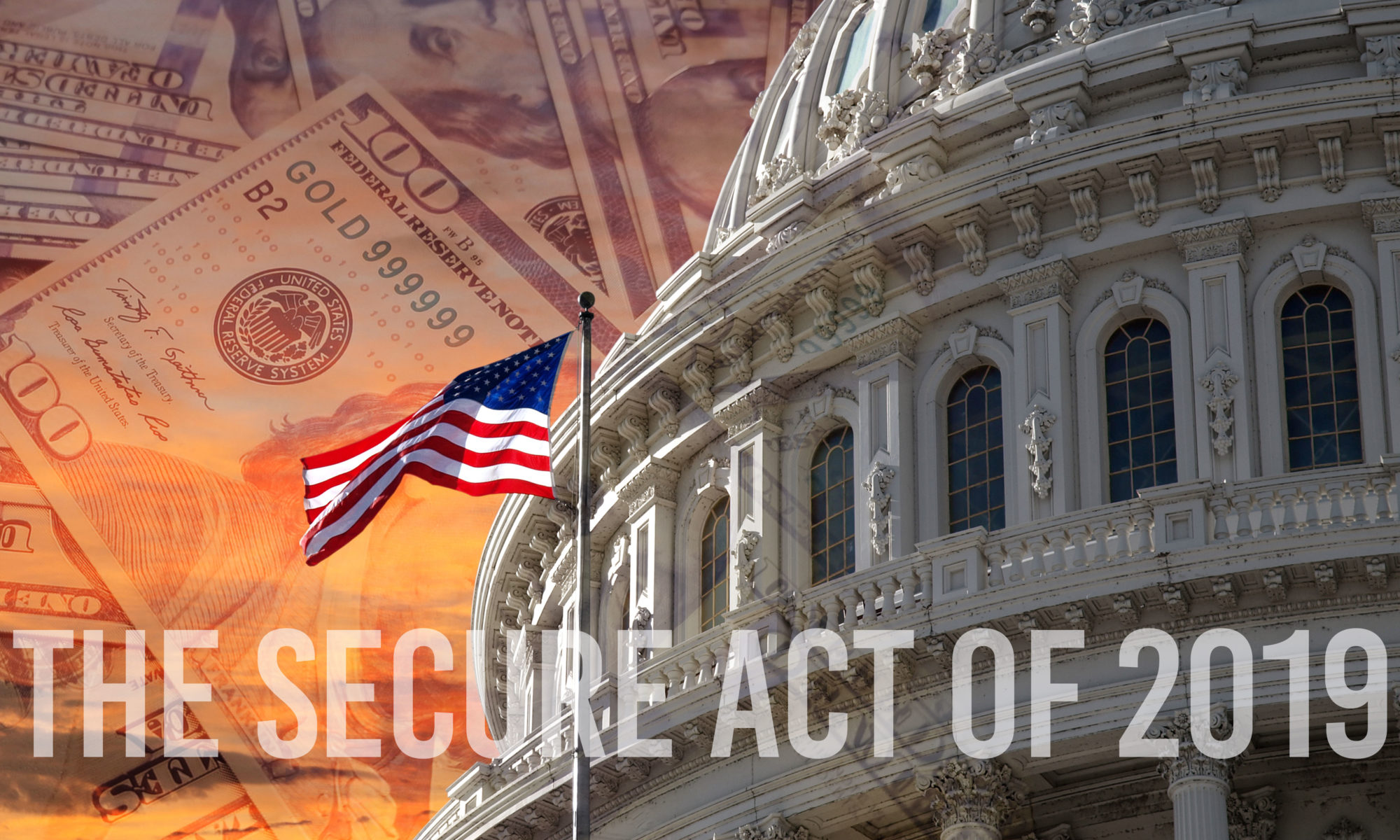On December 20, 2019, President Trump signed into law the Setting Every Community Up for Retirement Enhancement Act of 2019 (the SECURE Act) as part of a compromise bill to avoid a potential government shutdown. The SECURE Act contains many changes to retirement savings accounts in general. Although IRS guidelines have not yet been established, plan sponsors may take advantage of some of the changes in 2020. Following is a summary of new rules that current and potential 401(k) plan sponsors need to know:
- For Existing Plans
- Safe Harbor Plans Have New Flexibility – The IRS requires that 401(k) plans conduct and pass compliance testing to ensure a plan does not discriminate against Non-Highly Compensated Employees. However, a plan sponsor can satisfy the testing requirements by implementing a Safe Harbor 401(k) Plan. Under the SECURE act, the following Safe Harbor plan designs have been given more flexibility:
-
-
-
- Safe Harbor Nonelective (“SHNEC”): With this design, a plan sponsor can satisfy discrimination testing by making an employer contribution of at least 3% of compensation to all eligible employees. Under prior law, a sponsor can adopt a SHNEC 401(k) plan provided a notice was distributed to plan participants 30 days before the beginning of the plan year. The SECURE Act eliminates the notice requirement in general and permits a plan sponsor to decide to have a nonelective safe harbor plan mid-year, provided they decide prior to 30 days before the end of the plan year. They may decide even later than that, potentially after the end of the plan year, provided they make a safe harbor contribution of at least 4% of compensation. The notice requirement remains the same for plans that use the Safe Harbor Match design.
-
-
-
-
-
- Safe Harbor Qualified Automatic Contribution Arrangement: Under this plan design, an eligible employee is automatically enrolled in the plan with a pre-set deferral deduction that automatically escalates the employee’s contributions each year. The cap on the automatic escalation will increase from 10% to 15%.
-
-
-
- Part-Time Employees Must Be Covered in All 401(k) Plans – Currently, plans may exclude employees who don’t complete at least 1,000 hours of service in a 12-month eligibility computation period. This allowed a plan sponsor to exclude a part-time employee from the plan, if they worked less than 1,000 hours in a year. In 2021, the SECURE Act, will require that part-time employees who complete more than 500 hours of service in three consecutive eligibility years be permitted to contribute to 401(k) plans. They will not be required to receive employer contributions and will be excluded from non-discrimination testing but must be given the opportunity to contribute.
-
- For Plans that have participant loans – Effective immediately, 401(k) plans are not permitted to make plan loans available by credit card. Existing programs using this form of payment must be discontinued.
-
- Mandatory Distribution Date – Under current law, an owner or related employee, or any terminated participant must begin taking minimum distributions by April 1st after turning age 70 ½, or face penalties of a 50% excise tax. The SECURE Act increases that age to age 72. This applies to individuals attaining age 70 ½ after December 31, 2019. This means that if you turn 70 in 2019 but were born on or before June 30, 1949, the age is still 70 ½, and you must take a distribution by April 1, 2020. However, anyone born July 1, 1949 or later can wait until April 1, 2023 before taking their first distribution.
- For Employers Considering Adopting a Plan
- Higher Tax Credits May Be Available – The tax credit for small employers who start new retirement plans increases from $500 per year to as much as $5,000 per year for three years. There is also a new $500/year tax credit for up to three years for small employers that adopt new plans that include automatic enrollment. Small employers are considered those that had no more than 100 employees who earned at least $5,000 in the preceding year.
-
- More Time to Adopt – Under current law, qualified plans must be adopted by the last day of the year for employers to make deductible contributions for that year. For Tax Years beginning in 2020, qualified plans can be adopted after the end of the tax year and up until the tax return due date. This will provide much needed flexibility to employers considering qualified plans but will not permit employees to make retroactive 401(k) contributions.
-
- New Options under Multiple Employer Plans – The SECURE Act will make open multiple employer plans, called Pooled Employer Plans, or PEPs, available as an option beginning in 2021. These will be professionally managed plans that permit unrelated employers to participate. Adopting employers will be relieved of much (but not all) of their fiduciary responsibilities. PEPs are a major step towards increasing small employer plan coverage, and they will be the subject of a separate upcoming post.
There are several other sections, including a tenfold increase in penalties for failure to file Form 5500 and certain other returns timely and easing the in-service distribution rules for the birth or adoption of a child that we will discuss in greater detail in future articles. For now, contact your EJReynolds’ Plan Consultant with any specific questions as to how the SECURE Act may affect your plan.
.


